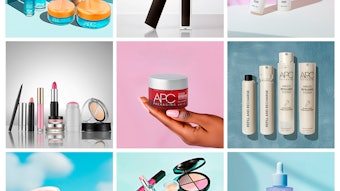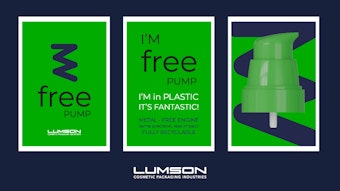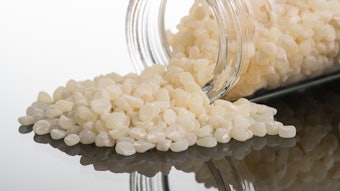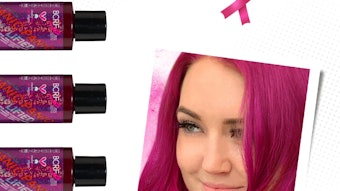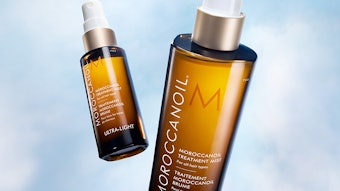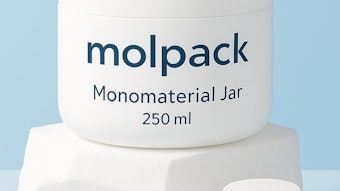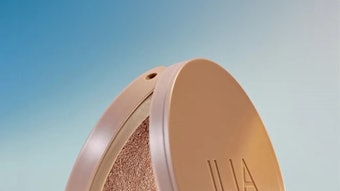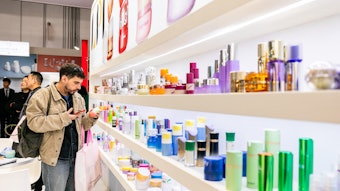Beauty is a marketplace so heavily segmented and saturated with product offerings that consumers, faced with so many choices, are becoming ever more demanding about every aspect of the products they buy. And with this new reality, marketers, and their packaging suppliers, are challenged to meet expectations.
In 2013, groundbreaking research was presented by MWV that illuminated how customer satisfaction radically drops after purchase and that marketers concentrate too much on achieving the initial sale and not enough on the repurchase. (Read about this research in the article “Packaging Matters” by MWV’s Steve Kazanjian in the September 2013 issue of GCI magazine.) These findings should stir us into action.
Beauty marketers, in the course of new product development, tend to separate their thinking about formula and package in a way the consumer may not. Consumers view a product in its totality. A perfect example of this is the scenario in which a package has changed, however slightly, and the customer is convinced the formula has changed as well, even when it has not.
It is well known that primary packaging has a great impact on consumer perception, as it provides intrinsic cues on perceived quality. These include the form, fit and finish of the packaging as well as the way the package delivers the formula to the user. So, if we are to look at ways of improving consumer product satisfaction in use, primary packaging is an obvious place to start, as it is used throughout the life of the product.
We call these attributes of perception “product aesthetics.” And just like the classic definition of aesthetics being the human perception of beauty (encompassing sight, sound, smell, touch, taste and movement), product aesthetics should relate to every aspect a customer experiences with a product and not just the formula.
Packaging’s Responsibility
Primary packaging’s responsibility to the formula is more than just being a container and a protector—it also is a conveyer. The delivery of the product is equally as important as the house it came in. Further, packaging’s role is to reinforce the consumers’ 360-degree interaction with the product. Maintaining these roles and responsibilities naturally falls to the disciplines of product and package development, and in the course of any new product launch, both of these disciplines need to work in concert.
While this symbiosis is well established in larger companies where there are specific package developers and product developers who work hand in glove as part of a product launch team, smaller companies may not be able to afford such a personnel luxury. In this case, the marketer must rely more heavily on the packaging supplier. The challenge here is the supplier may not have the knowledge or sensitivity to all aspects of a formula’s aesthetics. What is needed is a way to communicate these requirements to the supplier more effectively.
So, how do packaging suppliers improve the consumer experience as they use products? One of the tools that can help is task analysis. This is a study that is a part of the larger discipline of human factors and ergonomics, and is employed in the industrial design world for the evaluation of everything from cleaning products to car instrumentation to medical devices.
Task Analysis
Task analysis is well known to large consumer products companies, but it is often foreign to some beauty marketers. When a consumer is thought of in the abstract, there may be a tendency to throw functionality to the wind in favor of aesthetics, ending up with a primary package that may work with the DNA of the brand but doesn’t work with the needs of the formula.
To prevent this, task analysis is a meticulous framework that takes into account:
- the role of the user—self-application, as well as professional application such as a makeup artist or an esthetician;
- the location of use—bathroom, kitchen, car, office, etc., and the conditions of the location, particularly lighting;
- human performance—for example, dexterity and eyesight diminish after age 40; and
- task—an analysis of every touchpoint a user could possibly have with a product; from the moment they pick it up from a store shelf or view it on a website through purchase, its use, all the way until they dispose of it.
The task analysis can be implemented in many ways. One method is consumer panel testing, where test subjects evaluate a list of tasks. If panel testing is not in the launch plan, marketers can implement it as an analysis group from within the company or as an extension of package compatibility to go beyond the time/performance relationship of the formula with the package to also include the user interface.
Once an analysis is complete, the marketer now has a concise set of performance attributes to work through with the primary packaging supplier, and these suppliers are now challenged to customize the performance dynamics of their standard offerings to meet a higher level of product expectations. The basic one-size-fits-all concept in standard packaging no longer applies. Some examples of product aesthetic challenges include:
- Sheer terror—As the product does back flips through the valves of a dispensing pump, it can break down the actual formula. In some pumps, the product may actually reverse direction twice, under great pneumatic stress, before exiting the actuator.
- Just a dollop—Controlling that “just right” amount of product. Dispensing pump technology today has the ability to change the mechanism for a softer or stronger actuation force and to adjust the amount of dosage per pump. It also can offer solutions for thick viscosities dispensed though small orifices to guard against stringing—that unattractive dose resembling spaghetti.
- Having it all—The ability to get all of the product out of package. By making the heads of tubes wider, products can settle better to the last squeeze. Will the consumer still take the cap off of their first-time purchase? You bet. But when they see that all of the product has been evacuated, they likely won’t do it again. Thus, a better user experience is achieved.
- The dropsies—Protecting from breaking or spilling. The same consumer who will blame themselves for dropped and broken glassware will blame a package, even a glass one, for not surviving the fall. Standard packaging must be designed to survive a fall from real world resting places like bathroom counters or store shelves. This kind of criteria needs to be designed into standard packaging early on.
- Star ingredients—Raw material development in the beauty category far outpaces plastic resin development in primary packaging. A recent example is isododecane, a hydrocarbon solvent that is a superior emollient with a weightless feel to the skin. However, it has compatibility issues with traditional polyolefin resins used in the majority of skin care packaging. With the popularity of such ingredients, packaging suppliers need to pay closer attention to formula innovations and treat them as the new rule rather than the exception.
Making It Right
It has long been the habit of packaging companies that, when faced with these challenges, to revert back to the marketer to request they modify the formula. This is not an option anymore because it compromises the aesthetics, efficacy and integrity of the formula. Formulas are built to meet certain criteria, and any change negates the testing and validation that may have been established. Additionally, while packaging companies are pushing innovation as well, they cannot do so in a vacuum, just for innovation’s sake. They must partner with marketers up front to develop more versatile packages that can be more adaptable to formula innovations. It’s the way forward.
Curt Altmann is the marketing director for Yonwoo International/PKG Group, and has previously held positions in creative, marketing, new brand development and consulting at Max Factor, Revlon, Benetton, The Body Shop and Coty.


